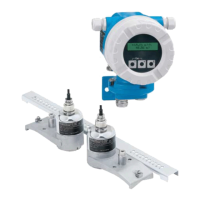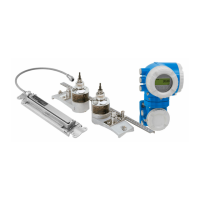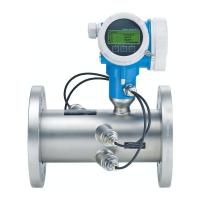The "Relay/Controls" menu
78
Selection:
• standard
For this limit type, a switch on point and a switch off point have to be defined. The switching
behaviour depends on the relative position of these switching points.
a. switch on point > switch off point
The relay is energized if the measured value rises above the switch on point.
The relay is de-energized if the measured value falls below the switch off point.
b. switch on point < switch off point
The relay is energized if the measured value falls below the switch on point.
The relay is de-energized if the measured value rises above the switch off point.
L00-FMU90xxx-19-00-00-yy-061
A: switch on point; B: switch off point; C: relay energized; D: relay de-energized
• tendency/speed
This limit type is similar to the "standard" type. The only difference is that variations with time of
the measured value are examined instead of the measured value itself. Therefore, the unit for the
switching points is "measuring value unit per minute".
• inband
For this limit type, an upper and a lower switching point have to be defined.
The relay is energized if the measured value is between the two switching points.
The relay is de-energized if the measured value is above the upper or below the lower switching
point.
Additionally, a hystersis can be defined, which affects both switching points.
• out of band
For this limit type, an upper and a lower switching point have to be defined.
The relay is energized if the measured value is above the upper or below the lower switching
point.
The relay is de-energized if the measured value is between the two switching points.
Additionally, a hystersis can be defined, which affects both switching points.
m, ft, m /h, ft /s, °C, m/min, ft/min, …
33
t
t
A
B
C
D
t
t
B
A
C
D
m, ft, m /h, ft /s, °C, m/min, ft/min, …
33

